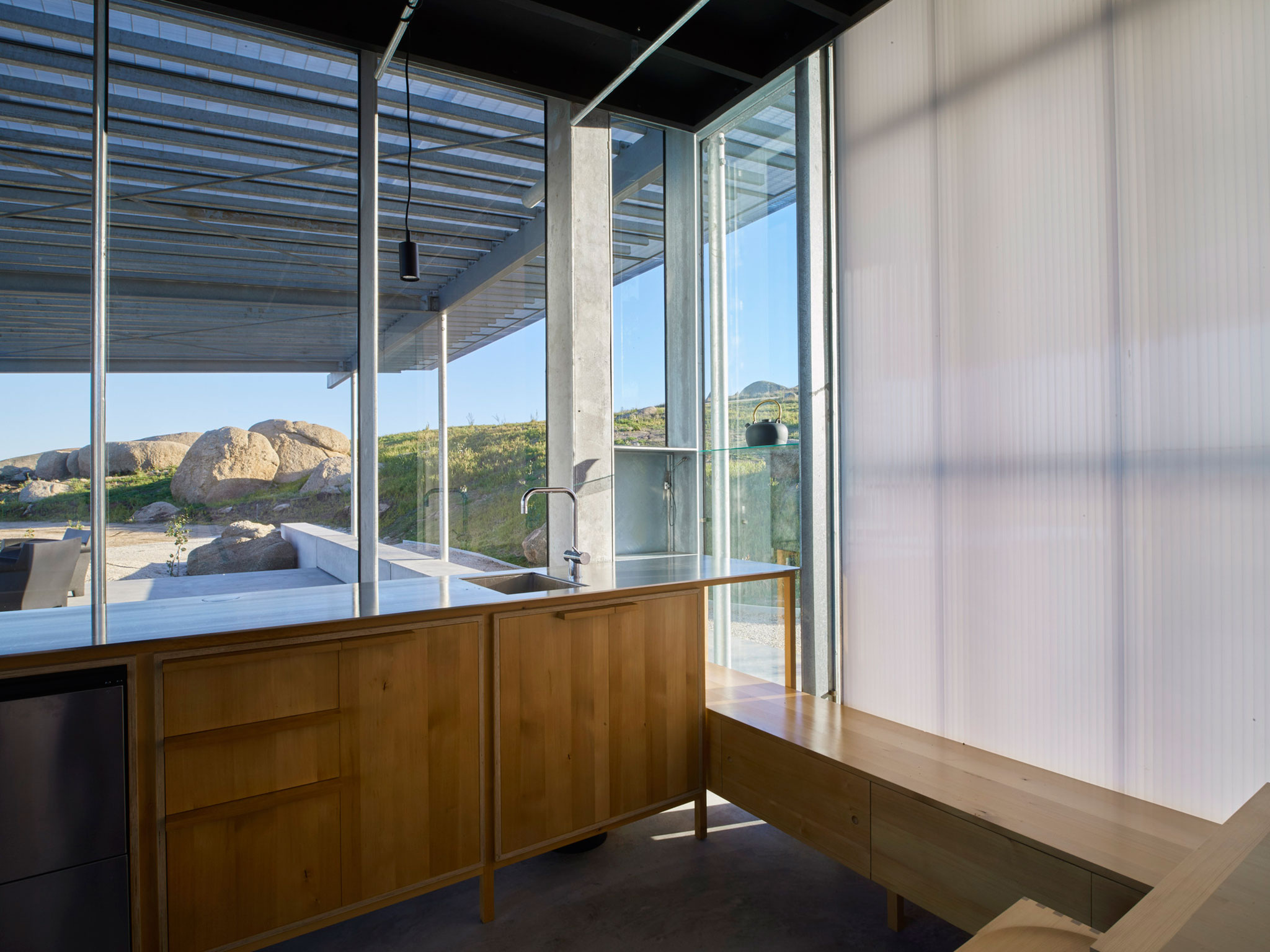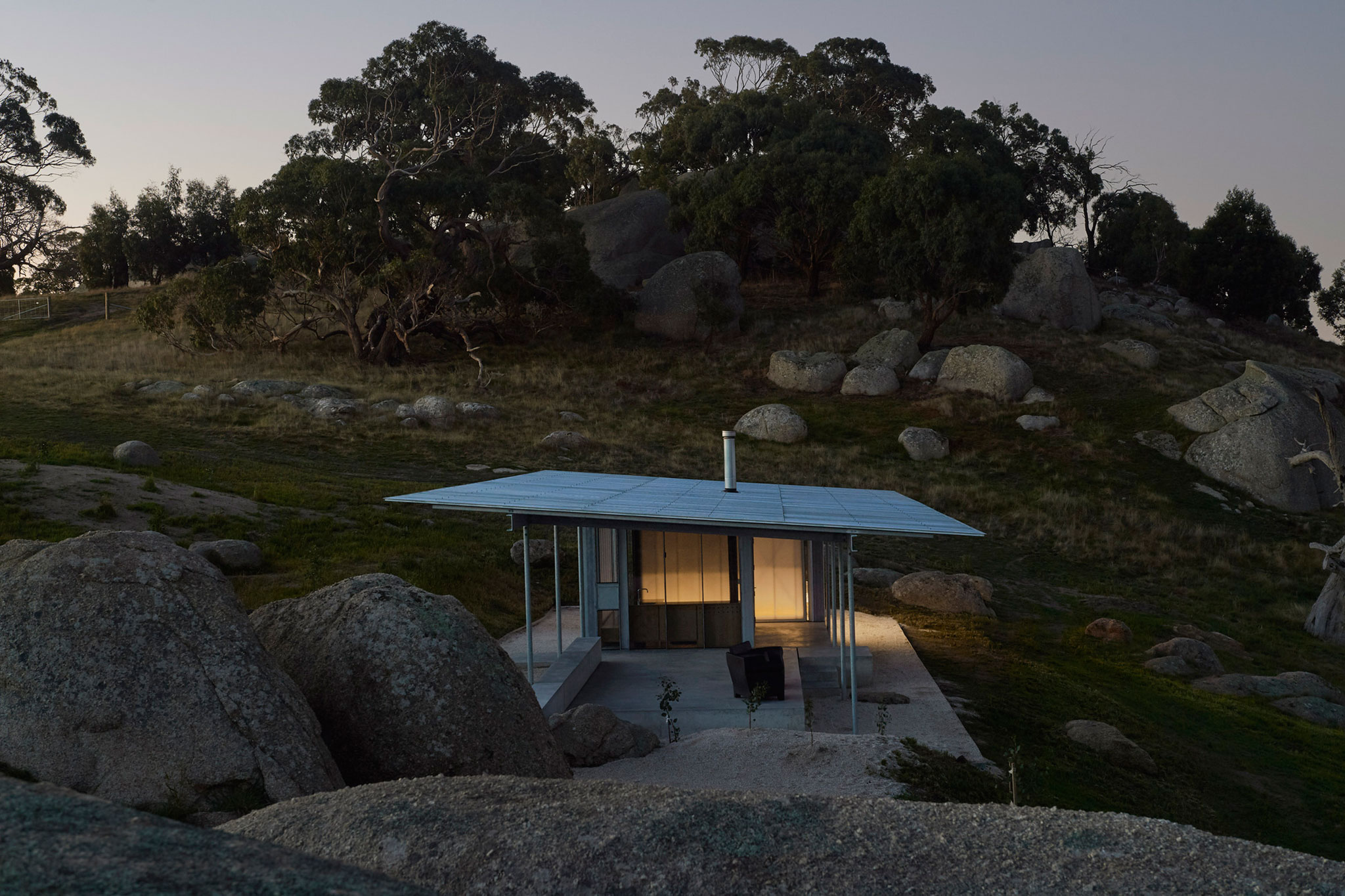The architects of Sean Godsell Architects designed Cabin on the Rocks by adapting a hay shed. Two sheds are created in the eastern area on a concrete pedestal, one for the kitchen and dining room and the other for the restroom and toilet. In these two spaces, a translucent material and a metal grid are incorporated into the ceiling to let light pass through, while slats are generated to provide shade.
Another of the references taken to develop the project was Yamakawa Cottage (1976), where the program is organized in an orderly manner on one floor on a wooden platform and the roof covers the rooms, the outdoor space or "other" space, which was what was sought in Cabin on the Rocks.

Shack in the Rocks by Sean Godsell Architects.. Photograph by Earl Carter.
Description of project by Sean Godsell Architects
"In making for ourselves a place to live, we first spread a parasol to throw a shadow on the earth, and in the pale light of the shadow we put together a house".
Jun’ichiro Tanizaki In Praise of Shadows.
The site is in country Victoria approximately one hour’s drive west of Melbourne. A previous scheme for this site was shelved due to cost. In reappraising the problem we suggested to our client that they might consider a simple farm shed to provide rudimentary accommodation on a different part of the site from the previous scheme. They had already erected a large machinery shed with solar panels and rainwater collection tanks uphill from where we agreed a very simple adaptation of a hayshed might occur.
In our discussions we noted the primary requirement in rural and outback Australia for shelter - a roof parasol that provides some shade and protection from the rain as well as making a place to enjoy outdoor activities - cooking, eating and engaging with and framing the spectacular landscape that exists on this particular site. In the end we adapted a hayshed structure and modified it by including a translucent roofing material for light and some industrial walkway grating to make a louvre for shade. Two translucent 'sheds' are positioned to the east end of a monolithic concrete plinth - one shed for cooking and eating and the other for sleeping and ablutions.

Shack in the Rocks by Sean Godsell Architects.. Photograph by Earl Carter.
Two houses by Riken Yamamoto and Field Shop - Yamakawa Cottage (1976) and the Ishii house (1977) - disassemble conventional residential programmes and then reassemble them in a highly creative way. I remember being intrigued by these projects as a young architect. In the case of the Yamakawa Cottage the functional programme is distributed in an ordered and logical way across a single level timber platform.
This highly poetic scattering of spaces is controlled by a large shallow gable roof which shelters not only the rooms but the outdoor or 'other' space in the building. This 'other' space is intriguing to me and I certainly had the Yamakawa Cottage in mind when I designed this shack in the rocks.

Shack in the Rocks by Sean Godsell Architects.. Photograph by Earl Carter.
In these confronting times our aspirations regarding housing have shifted so that grotesque desires for largesse are being reconsidered. The more parsimonious definitions of house explored by Semper, Laugier and others are being re-scrutinised (within the context of the digital world) so that our aspirations for the ‘local’ that Semper described as the four elements of architecture – the hearth, the roof, the enclosure and the mound, once again resonate. The concurrence of (spiritual) proximity and (social) distance demands the security of ‘home’ and ‘community’ more than ever.
The primitive hut for the twenty first century becomes an integral component of this reality. Our new domestic landscape is therefore a sanctuary of humble but sophisticated proportions.



































































